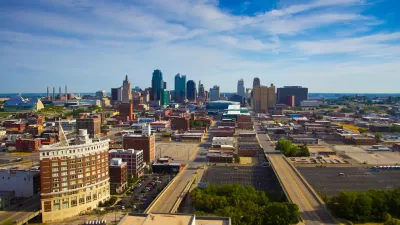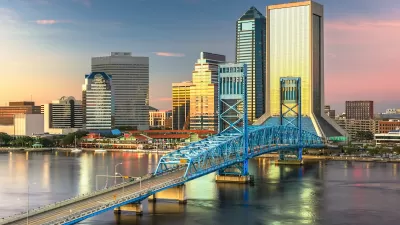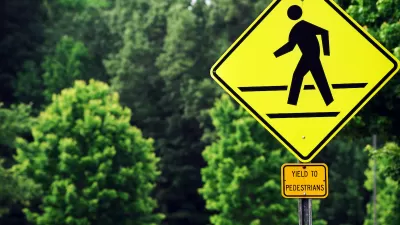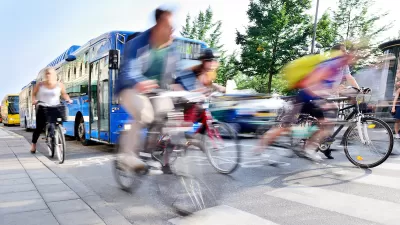The city aims to make its streets more walkable and reduce traffic violence by investing in sidewalks and other safety improvements.

Last month, Kansas City adopted a Vision Zero plan that pedestrian advocates hope will be a step toward making the city safer and more walkable. According to an article by Mili Mansaray for KCUR, “Residents complain about missing and poorly marked crosswalks and crumbling sidewalks.” The city’s walkability score, as defined by Walkscore.com, sits at 35 out of 100.
“We as a city, like most American cities, rely on design standards and other rules that do not prioritize pedestrians and other vulnerable road users,” said Michael Kelley, the policy director of BikeWalkKC. And, like other cities, Kansas City has seen a sharp rise in pedestrian deaths in the last decade, with communities of color disproportionately affected by traffic violence. “Smart Growth America reports that older adults were also struck and killed at much higher rates than other populations in 2020.”
Now, the city plans to implement more safety improvements and prioritize the communities that need them most through an $900 million infrastructure plan approved by voters in 2017, Go KC. “Through the Go KC bond program, the city will spend $7.5 million on sidewalks every year. Of that, $5.5 million will be used for sidewalks, and $2 million will be used on improvements to make streets safer for people with disabilities, such as curb ramps and colorful sidewalk bumps.”
Advocates are calling on the city to update its 2003 Walkability Plan and devote more resources to prioritizing pedestrians and other non-driving modes on the city’s roads and reconnecting communities cut off from resources by urban renewal projects.
FULL STORY: Can Kansas City park its cars and become more walkable?

Alabama: Trump Terminates Settlements for Black Communities Harmed By Raw Sewage
Trump deemed the landmark civil rights agreement “illegal DEI and environmental justice policy.”

Study: Maui’s Plan to Convert Vacation Rentals to Long-Term Housing Could Cause Nearly $1 Billion Economic Loss
The plan would reduce visitor accommodation by 25% resulting in 1,900 jobs lost.

Why Should We Subsidize Public Transportation?
Many public transit agencies face financial stress due to rising costs, declining fare revenue, and declining subsidies. Transit advocates must provide a strong business case for increasing public transit funding.

Paris Bike Boom Leads to Steep Drop in Air Pollution
The French city’s air quality has improved dramatically in the past 20 years, coinciding with a growth in cycling.

Why Housing Costs More to Build in California Than in Texas
Hard costs like labor and materials combined with ‘soft’ costs such as permitting make building in the San Francisco Bay Area almost three times as costly as in Texas cities.

San Diego County Sees a Rise in Urban Coyotes
San Diego County experiences a rise in urban coyotes, as sightings become prevalent throughout its urban neighbourhoods and surrounding areas.
Urban Design for Planners 1: Software Tools
This six-course series explores essential urban design concepts using open source software and equips planners with the tools they need to participate fully in the urban design process.
Planning for Universal Design
Learn the tools for implementing Universal Design in planning regulations.
Smith Gee Studio
Alamo Area Metropolitan Planning Organization
City of Santa Clarita
Institute for Housing and Urban Development Studies (IHS)
City of Grandview
Harvard GSD Executive Education
Toledo-Lucas County Plan Commissions
Salt Lake City
NYU Wagner Graduate School of Public Service





























